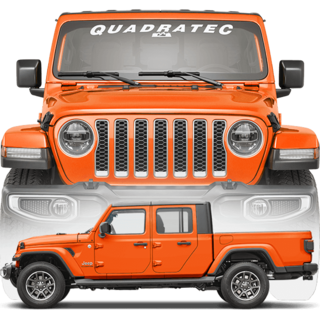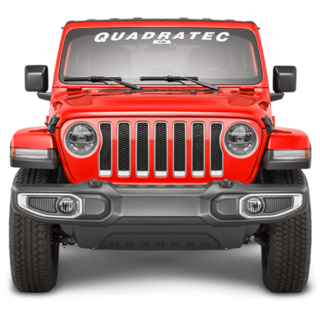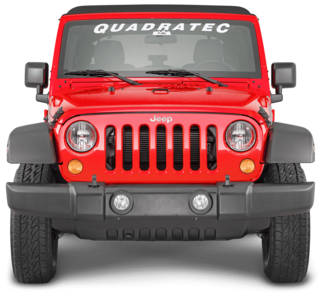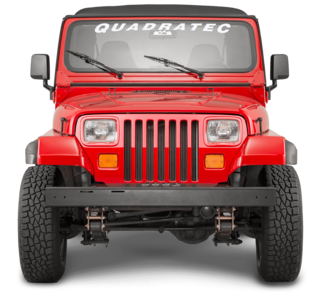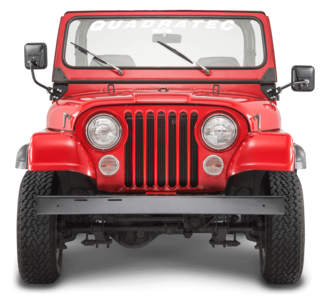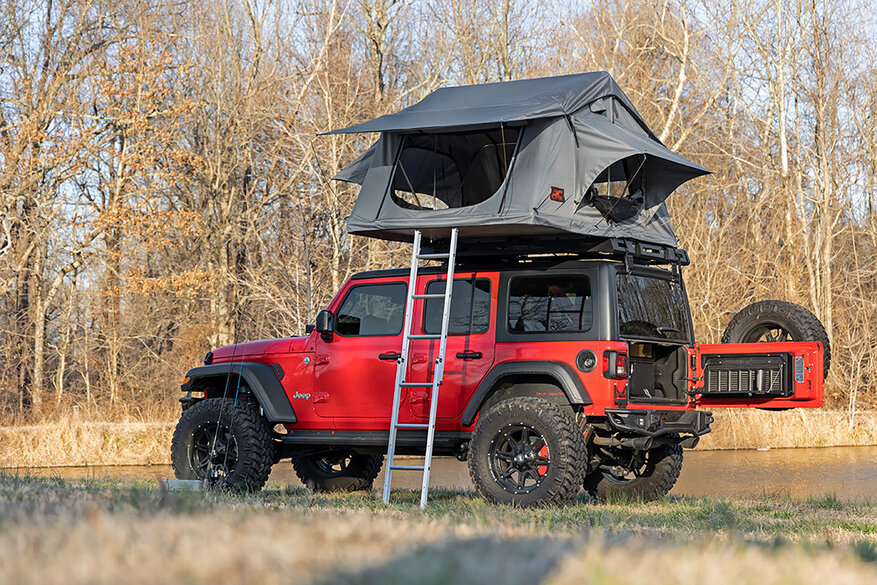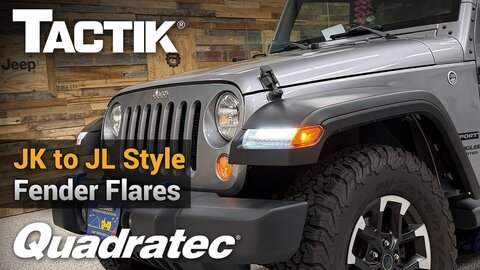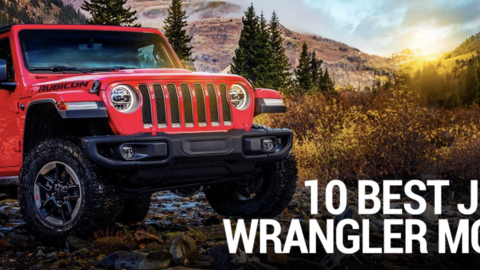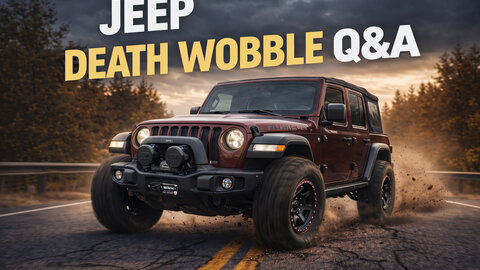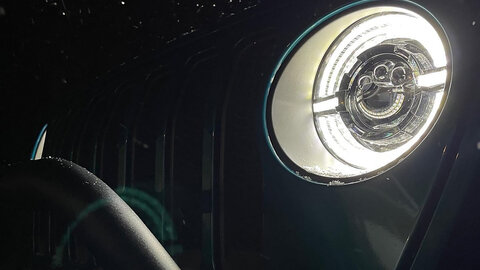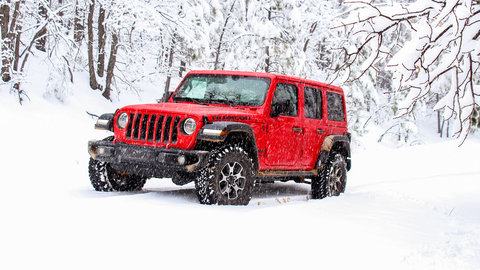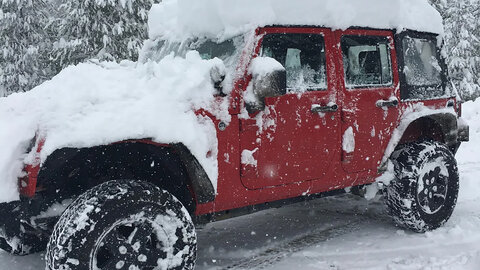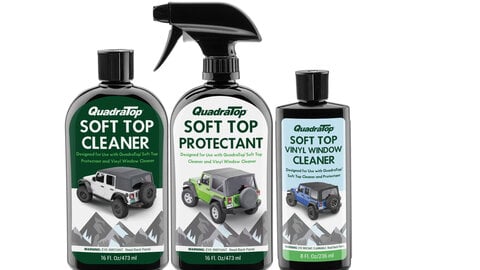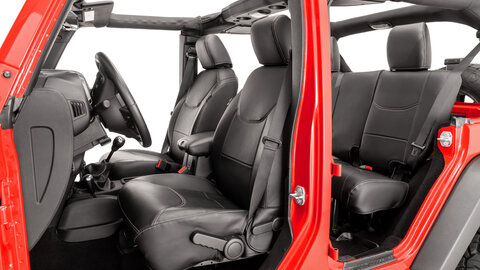by Matt Konkle
Managing Editor
Overlanding, whether in a Jeep Wrangler, CJ, or some other 4x4 machine, has exploded in popularity over the past decade, fueling YouTube channels, Instagram feeds, and even full-time careers. But despite all the attention, it is not a rigid set of rules or a single type of vehicle. Instead, overlanding is a mindset: self-reliant, vehicle-based travel where the journey and the experiences along the way are just as important as the destination.
This segment of ‘off-pavement’ excitement has been around for a long time, but really became more of a mainstream thing around 10 years ago. Then, when Covid hit, the volume cranked up even more.
Suddenly, everyone wanted to find a peaceful place away from anyone else. Camping sites and National Parks began to see record attendance month after month. Overlanding-style vehicles and products turned into high-demand items.
And while everything has settled a bit, it still remains an extremely popular field.
Overlanding isn’t simply heading into the woods, or down a trail, to take on a few obstacles and then make a campsite for the night.
It is more of a mixture of off-road driving and long-distance exploration. Taking on nature and being self-sufficient throughout the entire adventure.
So if this is something you’ve always wanted to know more about, here are some top questions about overlanding, and the answers to help you understand how the whole concept can work for you.
What exactly is overlanding?
Overlanding doesn’t have a single definition because every traveler does it differently. At its core, it’s self-contained, vehicle-based travel. Living out of your rig for a night, a week, or indefinitely. For some, it’s a minimalist tent-and-campfire setup. For others, it’s a fully built mobile home with all the comforts. The freedom to choose your own style is what makes overlanding so unique.
What do I need to start overlanding?
The most important thing is an adventurous spirit. You can start with any vehicle: Jeep, SUV, truck, and adapt it with the right gear for your needs. That could mean a rooftop tent and compact cooking setup, or a fully equipped rig with a shower, fridge and onboard power. Your equipment should fit your travel style and comfort level, not someone else’s checklist.
What types of overlanders are there?
Overlanders come in all forms. Full-timers living primitively on the road to weekend warriors who bring every home luxury along. Many document their journeys online, sharing vehicle builds, camp setups and destination guides. Some hit the road once a year, others never stop moving. Your ‘type’ is defined only by how you want to travel.
How do you prepare your Jeep for overlanding?
Start with essential maintenance—fluids, brakes, tires, and suspension should all be in top shape. Then consider upgrades based on your route and style: all-terrain or mud-terrain tires, recovery gear, skid plates, extra storage and lighting. The goal is reliability and self-sufficiency, so you can focus on the adventure instead of worrying about breakdowns.
What’s the best vehicle for overlanding?
There’s no universal ‘best.’ The right choice depends on your needs, budget and travel plans. You can outfit almost any vehicle for overlanding, but you may upgrade as your style evolves. A small SUV like a Jeep Compass might work for mountain biking adventures, while extended off-road trips call for a Wrangler, Gladiator, or larger expedition rig. The best plan is to build for your lifestyle, not just what looks good on social media.
Why has overlanding become so popular?
It’s the blend of exploration, independence and self-sufficiency. Overlanding offers the ability to travel at your own pace, see remote places, and live simply (or luxuriously) on your own terms. Whether you’re chasing national parks, off-grid trails, or global expeditions, it’s about the freedom of the open road paired with the comfort and security of having your home with you.
How much does it cost to get into overlanding?
Overlanding can be as budget-friendly or as expensive as you make it. Many people start with basic camping gear and their daily driver, then upgrade gradually. Others dive in with fully built rigs that can cost upwards of $10,000, or more. But whatever you decide, remember to focus on functionality over flash. Buy what you need, learn what works for you, and build your setup over time.
Is overlanding the same as off-roading?
Not exactly. Overlanding often involves off-road travel, but the goal isn’t just tackling challenging terrain. It is about the journey, exploration and self-sufficiency. Off-roading can be part of an overland trip, but overlanding emphasizes extended travel and living out of your vehicle, not just conquering a single trail.
How do I plan an overlanding route?
Start with your time frame, destination goals and vehicle capabilities. Don’t be afraid to use apps and maps that highlight backroads, public lands and camp spots. Also, always have a backup plan in case of weather changes, trail closures, or mechanical issues. Build in flexibility because part of the magic is discovering unexpected places to explore along the way.
What’s the most important safety gear for overlanding?
At minimum: a first-aid kit, recovery gear (like a tow strap and shackles), a reliable spare tire, basic tools, and extra food and water. Communication devices, like a GMRS radio, are essential if you’ll be far from cell service. The more remote you go, the more self-sufficient you need to be.
How do you manage food and water on long trips?
Plan meals ahead and pack accordingly. Many overlanders use portable fridges or high-quality coolers for perishable items. For water, carry more than you think you’ll need—either in onboard tanks, jerry cans, or collapsible containers. If your trip includes remote areas, bring a capable filtration system so you can refill from natural sources.
How do you handle sleeping arrangements when overlanding?
It depends on your setup and comfort preferences. Some overlanders prefer rooftop tents for quick deployment and safety from ground critters, while others use ground tents for flexibility or fully built interior sleeping platforms for stealth and weather protection. The key is to choose a system that’s quick to set up, comfortable for your needs and works with your vehicle layout.
What’s the best way to power electronics on an overlanding trip?
You can rely on a combination of vehicle power, portable battery packs and (if the budget allows) solar panels. Many overlanders invest in dual-battery systems to keep fridges, lights, and chargers running without draining the starting battery. Solar setups help extend your off-grid time by recharging batteries during the day.
How do you find places to camp when overlanding?
Once again, maps or apps like iOverlander, The Dyrt, and Gaia GPS are popular for locating dispersed campsites, public lands and hidden gems. Many overlanders also rely on ranger stations and word of mouth from fellow travelers. And remember, when camping, always follow Leave No Trace principles and local regulations to keep spots clean and accessible for everyone.
What’s the difference between overlanding and vanlife?
While there is some overlap, vanlife is typically more about stationary comfort and living in a van full-time, often in or near urban areas. Overlanding focuses on exploration, self-sufficiency, and reaching remote destinations, often involving more rugged terrain and off-road travel. Both are mobile lifestyles, but overlanding is generally more adventure- and off-grid oriented.
----------
Overlanding is whatever you make of it, whether that’s a weekend escape in your Jeep or years of full-time travel. The best part? You set the rules. Start with what you have, add the gear you need, and hit the road ready to explore. Your journey, your build, your adventure.
Related Articles:
Jeep Air Compressor Buyer’s Guide: Best Options for Trail and Travel

